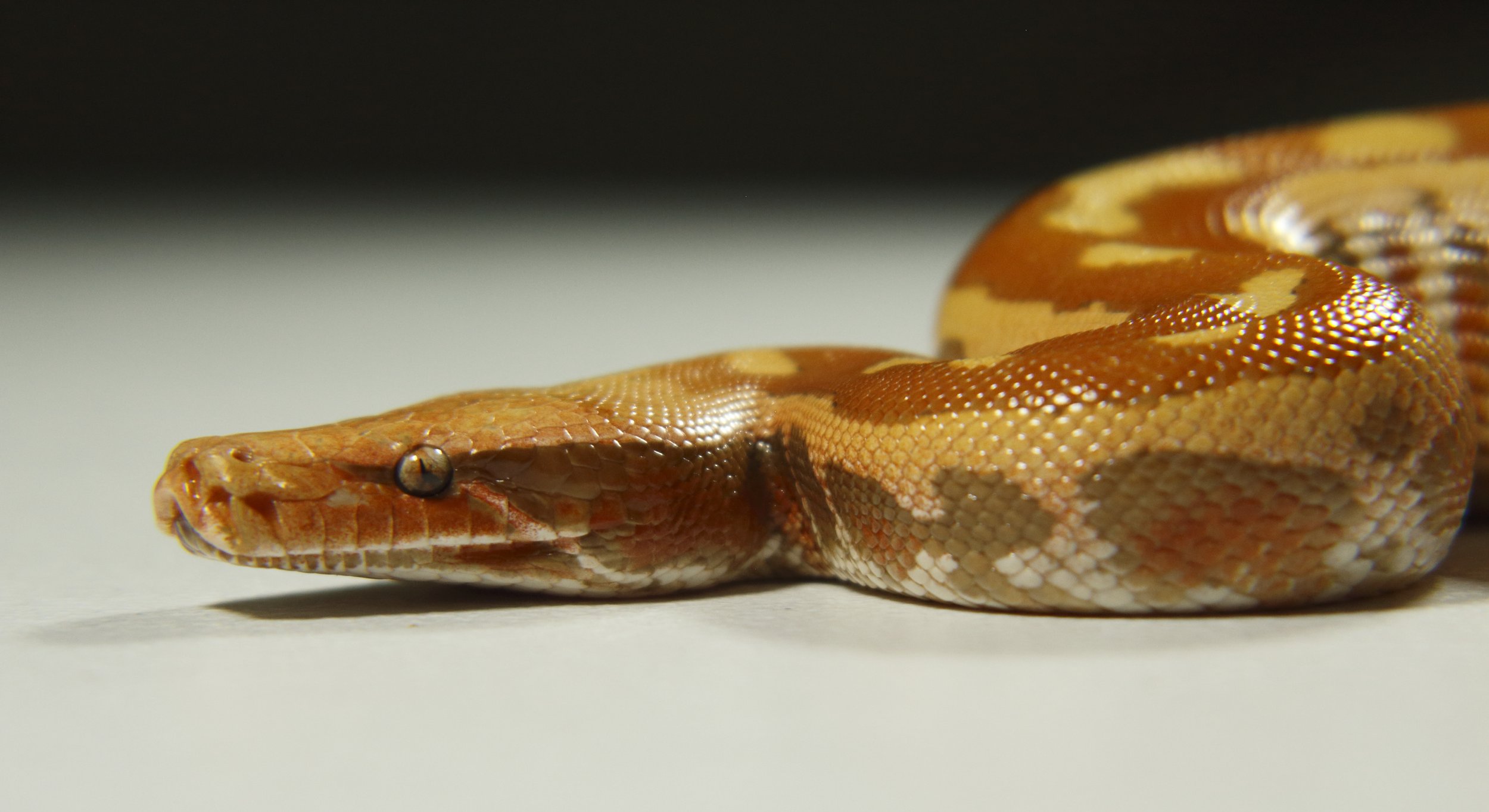
T-Negative Albino
With pure whites and bright reds and yellows, this incredible mutation is also known as "The true albino." Like the T-Positive Albino, this mutation is a recessive trait, meaning that both parents must carry a copy of the gene (Heterozygous), and they both have to inherit that copy to their offspring so the animal can visually express the Albino trait (Homozygous). The "T" stands for Tyrosinase. A crucial enzyme in the melamine production chain that helps synthesize melanin (black pigment) through its interaction with an amino acid called Tyrosine. In this case, the "Negative" indicates that Tyrosinase is NOT present or functional, preventing the production of Melanin (black pigment) altogether. On T-Negative animals, the black color is entirely replaced with white. However, the red and yellow pigments are still present, creating one of the most colorful appearances of any python species known. The albino gene (both T+ and T-) is essentially a color-modifying mutation, having no influence on the snake's pattern. The T-negative albino also has various lines. These are: Red T-negative albino. This is the most prevalent and known of the T-Negative albino lines. The presence of Reds, Whites, and Yellows makes this morph highly desirable among blood python keepers. This line was also the first T-negative albino available to the public and has been worked into incomplete dominant mutations, creating outstanding-looking combos.Lavender T-Negative albino. This line of T-negs lacks both Red and Black pigments, creating a high yellow Albino. The appearance resembles the T-Neg albinism seen in other species of pythons.Orange T-Negative. As the name suggests, the predominant coloration of this variety of T-neg albinos is bright orange tones.Red-eye (Ruby) T-Negative albino line: This line originated from an imported Wild caught male with full Ruby red eyes. This line produces deep red and colorful animals with either full redheads or bright Whiteheads. It is worth mentioning that Ruby eyes are inherited as an incomplete dominant trait, indicating that the eye color and the albino gene are two separate mutations. VPI was able to produce a "Super Red eye" T-neg albino.Look at VPI's Website to see these different variations of T-negative albino animals. (including the Super Red eye T-Negative)
At the Scarlet Society, we focus on the “Red Eye line” of T-Negative albino. This line's incredible color saturation has a massive potential for future projects with T-Negative Albinos combos.
Take a look at some of our “normal-eyed” T-negative albinos from that line in comparison with the Red T-negative albino line.

Juvenile “Normal eyed” T-negative albino from Red eye line. Adult Red T-Negative Albino line. The most common/popular line of T-negative albinos available. The T-negative albino replaces black pigments with White, creating this beautiful color display. Notice the absence of dark pigments throughout the snake's body. For comparison purposes, The T-positive albino replaces black pigments with purple and gray shades. The presence of Melanin-related products creates a more contrasting-looking albino. 




